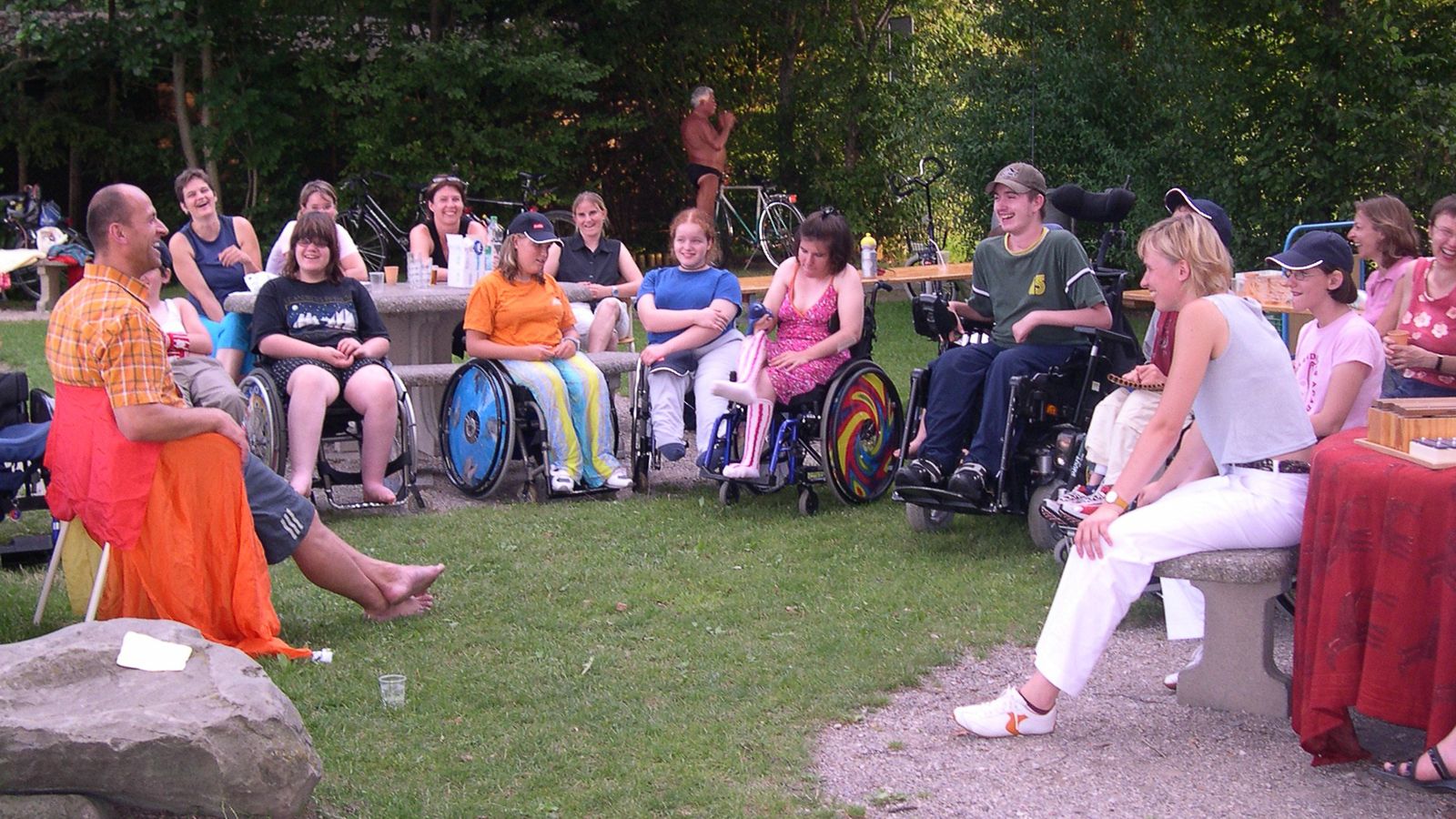Discussion

Being a teenager with spina bifida presents a range of unique challenges, not only for the body functions and structures, but also for activities and participation. Environmental and personal factors also play an important role in the dynamic interaction between these bio-psycho-social components. This translates into the need for specialised medical/rehabilitation and psychosocial support for teenagers with spina bifida and their families during this period of transition.{cs13-fn2}{cs13-fn3}{cs13-fn4}{cs13-fn5}{cs13-fn10}
This case of Gabi illustrates how a comprehensive inpatient rehabilitation programme can bring a 15 year-old girl with spina bifida one step closer to adulthood by helping her gain more independence. Gabi's case also highlights the importance of dealing head-on with psychosocial issues faced by teenagers with disabilities, in this case with spina bifida, in daily life.
Compared to teenagers without disabilities, young persons with spina bifida or other physical disabilities may struggle more than non-disabled peers in gaining independence, developing peer relationships and participating in activities with peers, and possibly finding their way toward a future profession.{cs13-fn4}{cs13-fn5}{cs13-fn10} In Gabi's example, she struggled with developing friendships with peers from school, specifically classmates without disabilities. Gabi stated that she felt more comfortable with others like herself i.e. teenagers who use a wheelchair. In addition, continued dependency on her family or personal assistants for activities of daily living like dressing and toileting further dampened her perceived quality of life.
""Continued dependency on her family or personal assistants...dampened her perceived quality of life.""
During a three-week rehabilitation programme, Gabi and a multidisciplinary rehabilitation team tackled the challenge of increasing Gabi's overall level of independence, specifically independence in mobility and self-care, with individual interventions and group activities. They also honed in on improving Gabi's interpersonal skills, specifically in dealing with peers with and without disabilities. Although not all of the goals set were achieved, she completed the rehabilitation programme with increased independence, particularly in self-care, and seemed to be more assertive and confident. The group activities also helped Gabi to build up self-esteem and learn skills that support interpersonal relationships. Furthermore, she developed friendships among peers with a common and shared life experience.
She has made significant improvements in creating strategies to deal with complex interpersonal interactions and informal social relationships. She was also able to deal with stress and other psychological demands better.
Gabi's psychologist
The rehabilitation programme that provided Gabi the opportunity to become more independent and to further develop personal and social skills reflects the type of healthcare programmes recommended in several publications on the transition from paediatric to adult healthcare for adolescents with spina bifida.{cs13-fn3}{cs13-fn6}{cs13-fn12}{cs13-fn13} In these publications, the authors indicate that a comprehensive multidisciplinary approach would help ensure that the complex spectrum of health and health-related issues related to spina bifida is addressed adequately. It has also been suggested that the development of designated programmes within adult clinics would facilitate the collaboration between paediatric and adult healthcare providers and ultimately the smooth transition into adult healthcare. The rehabilitation programme, in which Gabi participated, was not only comprehensive, goal-oriented and multidisciplinary, it was specifically designed for adolescents with spinal cord disorders like spina bifida, and was also integrated within an adult spinal cord injury rehabilitation clinic.
Empowering transitioning patients, using evidence-based guidelines, providing outreach and care coordination, continuity of care, etc...are seen as essential to quality and person-oriented healthcare provision, including rehabilitation.{cs13-fn12}{cs13-fn13}.
Since the lived experience of teenagers with spina bifida go beyond biological health concerns, it is essential that rehabilitation and other healthcare providers additionally explore the social context of the young adult, evaluate the risk factors for social isolation and barriers to psychosocial development, and provide appropriate resources and interventions accordingly.{cs13-fn16}
Although it was unclear whether the progress Gabi made in the rehabilitation programme would be maintained at home and at school, in the end, the rehabilitation programme was a success for Gabi – she took significant steps towards greater independence and potentially toward improving her relationship with peers, including non-wheelchair users.
I am convinced that she will find her way.
Gabi's psychologist